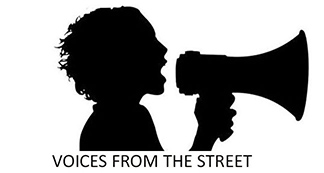Bronwen Sims calls it Ontario’s “work disincentive program.”
The 35-year-old woman, who suffers from bipolar disorder and fibromyalgia, has been living in poverty on Ontario’s disability support program for the past 10 years while doctors help her battle alcoholism, depression and severe panic attacks related to her mental illness.
Sims has been well enough to work part-time for the past five years. But her chances of crawling out of poverty are slim. For every dollar she earns, the province cuts 50 cents from her disability cheque and raises the rent on her subsidized apartment.
Hence, Sims’ derisive description for the provincial program.
Now earning $17.50 an hour, Sims, for the first time, has the potential to earn slightly more than the $1,372 in monthly basic income, shelter, nutrition and employment supports she’s eligible to receive through the disability program.
But she still can’t afford to leave “the system” because she needs the program’s drug card to pay the high cost of prescription drugs that keep her illness in check.
If her condition flares up, leaving her physically unable to work, at least she knows she will get some income.
It’s a situation that sidelines many of the province’s 260,000 households that rely on Ontario’s disability support program (ODSP).
“Many don’t even bother to work even when it’s good for their physical and mental health,” Sims says. “And that’s just wrong.”
Fixing the disincentives in Ontario’s crippling and complex welfare system, which also serves another 238,000 households headed by adults without recognized disabilities, was a commitment Ontario made when it unveiled “Breaking the Cycle,” its groundbreaking poverty reduction strategy, a year ago this week.
But Sims and others on welfare and disability supports are still waiting for the promised social assistance review “with a goal of removing barriers and increasing opportunity.”
“It’s really disheartening,” said Mary Marrone, of the Income Security Advocacy Centre, which lobbies for low-income Ontarians.
“We really celebrated `Breaking the Cycle’ and the commitment they made to the social assistance review,” she said. “But so far we haven’t seen any will to move ahead.”
Last week, Social Services Minister Madeleine Meilleur told the legislature that her ministry is developing terms of reference for the review and “will announce it soon.”
In the short term, Marrone and other anti-poverty advocates are pushing for changes to welfare rules regarding assets and earnings.
They would like the province to allow disabled people like Sims to keep the first $500 a month of their earnings before being subject to the 50-per-cent clawback on their cheques. The extra $6,000 annually would bring a single disabled person’s income to about $18,500, or just above Statistics Canada’s 2007 Low-Income Cut-off of $17,954 for a single person living in a large city.
Currently, an able-bodied person who loses their job and runs out of Employment Insurance has to drain all their savings – including RRSPs – before becoming eligible for welfare. Activists – and even TD Bank’s chief economist Don Drummond – want Queen’s Park to exempt the first $5,000 of savings before forcing the unemployed to liquidate assets, as is the policy in other provinces such as Alberta.
They also suggest Queen’s Park delay the asset test for the first six months a person receives welfare, as is the policy in Newfoundland.
These measures, they say, would provide an economic cushion for people facing job loss.
“The province took some important steps in a really difficult year. I absolutely credit them for that,” said Marrone, who praised the province for increasing the Ontario Child Benefit from a maximum of $600 to $1,100 per child.
“But they have to do something about the welfare transformation.”
Credit: Toronto Star
